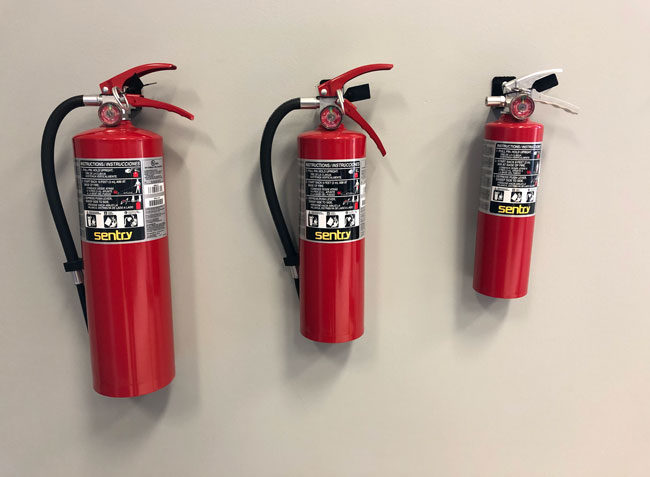

There are several ways to inspect your fire extinguisher to see if it’s still good to use.

If an extinguisher is within reach, it can save you precious minutes of time in combating an unintentional fire. Start by factoring in at least one extinguisher for each floor, then add another extinguisher for every fireplace, one for the kitchen, one for the garage, and put one in any other room in the home you feel necessary. Where should I put my fire extinguishersĮxperts advise at least one fire extinguisher per floor, but understand that if a fire does start, you don’t want to have to run too far to find it in the home. You’ll also want a Class K extinguisher in the kitchen. Stock every floor of your home with an ABC extinguisher (don’t forget the garage), and make sure everyone knows where they are. Look for an extinguisher labeled “ABC” which means it can be used on a Class A, B and C fires. This is why there are all-purpose fire extinguishers. When a fire occurs, most of us tend to panic first, think second. Place this extinguisher in an easy to reach place like under the stove, under the kitchen sink or mounted on the wall. Never use water to put out a grease fire! Water can actually make a grease fire spread and splash, and it can be incredibly damaging (even deadly) to humans and pets. This type of extinguisher relies upon saponification, which means it turns the fuel (in this case, fat) into soap. “D” stands for Dynamite.Ĭlass K: Class K extinguishers help put out grease fires, like in the kitchen. But it can also happen inside the home if these types of metals are used for hobbies or home-based businesses. This type of fire is more common to laboratories, businesses and factories. “C” stands for Current.Ĭlass D: Although more rare in the home, a Class D fire is one caused by combustable metal like potassium, magnesium or calcium. Never use water to put out an electrical fire! Water and electricity don’t mix, and you can suffer from electrocution by using water to douse an electrical fire. In this type of fire, the electrical current is the fuel source, and until it is cut off the fire may continue to burn. Electrical fires can be caused by appliances, overloaded outlets, circuitry boards, or other electrical components. “B” stands for Barrel.Ĭlass C: The Class C extinguisher is designed for electrical fires. The garage, shed or workshop are a common place for these gasses and liquids to be stored, so it’s important to have this type of extinguisher on hand within those spaces. But this type of fire can spread quickly. These gases and liquids are highly flammable, but can also burn out quickly if the fuel source is removed (like if the propane tank were turned off). Examples would be propane, gasoline, ethanol or butane. “A” stands for Ash.Ĭlass B: A Class B fire is one in which the fuel source is a combustible gas or liquid. This type of fire can be extinguished with water as well. This is the best extinguisher to have near the fireplace or fire pit (like a camp fire). Here are the different classes of fire extinguishers and their purpose:Ĭlass A: The Class A extinguisher is meant to combat ordinary combustibles like firewood (and other wood), paper, cloth, and plastics. Fire Administration.* A grease fire requires a Class K fire extinguisher (or look for one that says “for cooking fires”). In fact, “cooking” is the leading reported cause of house fires and accounts for about 50% of residential building fires, according to the U.S. Grease fires, for example, are caused when oil or grease (like bacon grease, cooking oil or lard) comes into contact with high heat. What type of fire extinguisher should I have?įire extinguishers come in various sizes, shapes and formulas to combat the different types of fires you might encounter in a home situation.
BEST FIRE EXTINGUISHER FOR HOME HOW TO
Let’s take a look at what type of fire extinguisher you should have in your home, how many you should have, where they should be located, and how to use them. Have you ever watched a spark fly out of the fireplace onto a nearby rug? Or have your pan of food catch fire on the stove (or in the microwave)? Fire caused over $6.8 billion worth of damage to homes in 2013 and accounted for over 12 thousand injuries and 2,755 deaths*. You’ve probably experienced a fire-related emergency in your own home. Knowing what type of fire extinguisher to have in your home and how to use it can alleviate worry and make you and your family feel more prepared for this type of emergency. Unintentional house fires are terribly frightening, not to mention costly and sometimes, deadly.


 0 kommentar(er)
0 kommentar(er)
